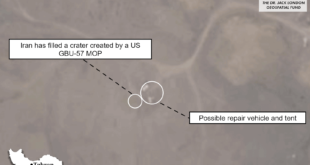In January, Lebanon agreed to a new cabinet after nine months of political stalemate. The long-awaited government restructured the balance of power in ways that did not reflect the results of parliamentary elections in May 2018.
Much of this has to do with the compromise that led to the election of Michel Aoun as president in 2017, which gave undue influence to Hezbollah and its allies.
Lebanese Foreign Minister Gebran Bassil recently stated that, had it not been for Hezbollah, Aoun — his father-in-law — would not have become president. That revelation shows just how closely Bassil’s Free Patriotic Movement is aligned with Hezbollah, even at the expense of other partners, including Prime Minister Saad Hariri and Lebanese Forces leader Samir Geagea, who backed Aoun.
Hariri went against the wishes of his followers when he nominated Aoun as president and Geagea offered his support, drawing fierce backlash.
Lebanon’s new cabinet is deeply unbalanced, with 18 of its 30 ministers affiliated with the Hezbollah camp. This raised concerns over the country’s future and stability, especially as the so-called Axis of Resistance — Iran, Hezbollah and Syria — claims victory in Syria.
Each time a cabinet is formed in Lebanon, the ministerial declaration — a comprehensive overview of the body’s policy positions presented to parliament to gain a vote of confidence — has been delayed due to the tricky issue of Hezbollah’s control of weapons. Previous cabinets have spent weeks agonising over the issue, sometimes putting them on the verge of collapse.
However, with the new cabinet, the Lebanese Forces raised only mild opposition to Hezbollah’s weapons, after which a ministerial statement was unanimously passed.
Hezbollah officials considered this evidence that a culture of resistance is entrenched in Lebanese political life and that the previous opposition had lost ground.
Not only is the cabinet decidedly pro-Hezbollah, it includes ministers with questionable backgrounds. Saleh al-Gharib, assigned the refugee portfolio, is a staunch supporter of the Syrian regime and has vowed to do whatever it takes to push Syrian refugees back into their country, a policy that could jeopardise the lives of tens of thousands.
Such positions, which many consider to be a step towards normalising relations with the Assad regime, deepened internal divisions over Lebanon’s relations with Damascus, which recently issued a “terrorist list” that included Hariri, Geagea and Druze leader Walid Jumblatt.
Lebanon’s political and confessional structure was built on a delicate balance of power. Each time that balance has been upset, the country has experienced turbulence. This happened in 1958, in 1968 and, of course, when civil war broke out in 1975.
The political dynamics in Lebanon are quite different now. The Lebanese left, supported by Palestinian factions in the 1970s, has lost influence, partly because of reforms introduced by the Taif Agreement (1989) and new actors, such as Hezbollah, that have changed the way the political game is played.
Will Lebanon descend into chaos? It’s hard to say given the competing interests of local and regional stakeholders. What is certain is that the country is as fragile as it has always been.
 Eurasia Press & News
Eurasia Press & News



